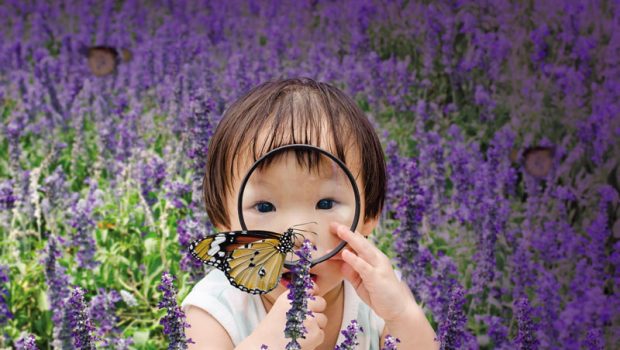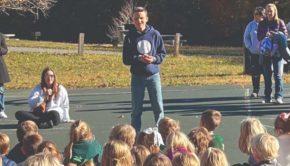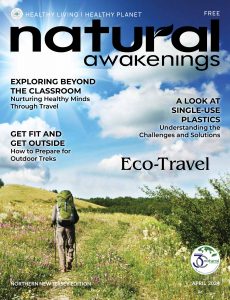LOVING NATURE
Outdoor Adventures for Kids
by Ronica A. O’Hara
Getting kids off the couch and into the great outdoors can be a challenge when they tend to be better acquainted with the popular Angry Birds video game characters than with the real warbling ones. Unfortunately, studies show that digital devices, parental work overload and media-stoked fears of the outside world are currently making our kids nature-deprived.
Yet, they have an instinctive love of the outdoors, experts agree. “When given free access to nature, children’s play follows the same patterns all around the world,” says prominent environmental educator David Sobel, author of Wild Play: Parenting Adventures in the Great Outdoors. “All kids like creating special places, going on adventures, befriending animals, following maps and paths, and so on.”
The more we encourage them, the more likely they’ll discover the thrills of the natural world—and numerous studies show that they’ll then be calmer and less stressed, better able to concentrate and less likely to be obese. Kids also are more “responsive and connected” when they are talking outdoors with adults than talking indoors, according to a recent study published in the Journal of Environmental Psychology.
Here are some simple ideas to get started:
Build fairy houses. In a park, forest or backyard, ask the child to find a quiet spot, like the base of a tree or under a bush, and build a tiny house using only their imagination and natural materials such as sticks, bark, grass, pebbles, feathers and pinecones. “The fun is ageless and connects you to nature in magical and memorable ways,” says Tracy Kane of Maine, whose website, FairyHouses.com, offers ideas and books.
Befriend a bug. Help them look for bugs and crawling things in the dirt and on leaves, then ask them to draw them. Back home or at the library, kids can search in guidebooks or online to learn the critters’ names and traits.
Engage in real-life tweets. Show them how to listen carefully for bird songs and count how many different ones they hear. See if they can imitate the tweets or find words that describe them. Check out a bird-song beginner’s guide at Audubon.org/news/a-beginners-guide-common-birdsounds-and-what-they-mean.
Create mud art. “Make a batch of mud and use it to create sculptures, paint a masterpiece or just use it to jump in and get messy with,” suggests MaryEllen Mateleska, director of education and conservation at the Mystic Aquarium, in Connecticut.
Make dolls and critters. Kids can use hibiscus or hollyhock flowers and toothpicks to make dolls with flowing skirts. Or they can collect leaves of different shapes and sizes and glue them together to create leafy creatures. “You can take it an extra step by inventing a story and creating a one-of-a-kind storybook,”says Mateleska.
Grow a garden. Using a kid-sized plot of land—it can even be a big pot of dirt—give them a trowel, a watering can and easy-to-grow seeds such as radishes and carrots. Not only will they get exercise, a Texas A&M University study shows gardening makes kids more likely to choose veggies for snacks.
Invent a cozy hideaway. Under the limbs of a big tree, old blankets and pillows can be used by a child to build a “secret” hiding place, stocked with lemonade, apples and fun books.
Incorporate digital delights. Rather than competing with digital devices, integrate them into the nature experience. “A phone app like iNaturalist lets kids take a picture and will identify the creature or plant for them,” says science teacher Jemma Smith, of The Education Hotel, a UK-based tutoring service. “Or have them take three artistic pictures of nature.”
Try geocaching. This game for older kids requires them to use their phones as a GPS to find tiny treasure boxes that have already been hidden all over the countryside. “Most boxes have small trinkets to swap and a tiny book to sign their name,” says Smith.
Time It. Simply set the timer for an hour, open the door into the back yard and let the kids “go at it,” as does writer Attiyya Atkins, a mother of four in Pompano Beach, Florida. “Mostly it’s self-play, but I come out sometimes and teach them about nature, or we do art projects with leaves, rocks or dirt. It’s always naturally fun, and they’re pretty tired afterwards!”
Ronica A. O’Hara is a Denver-based natural health writer. Connect at OHaraRonica@gmail.com.





























